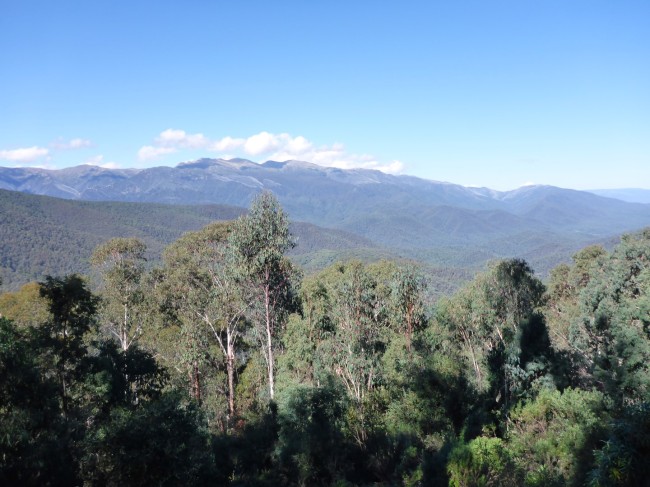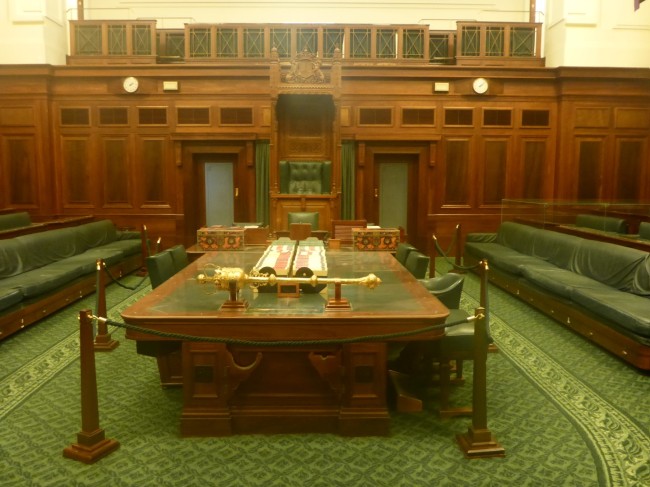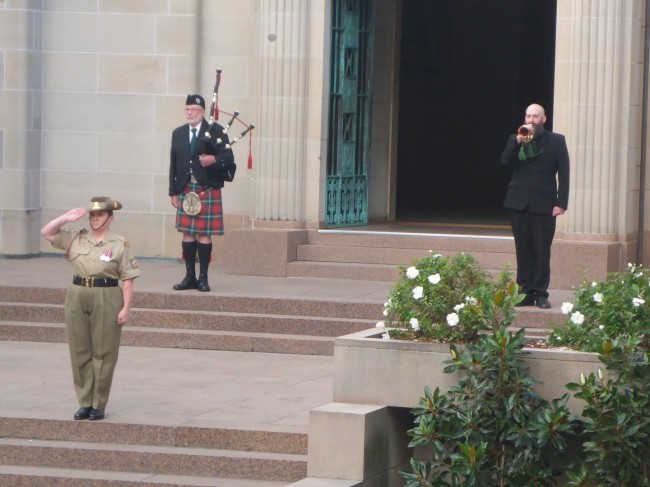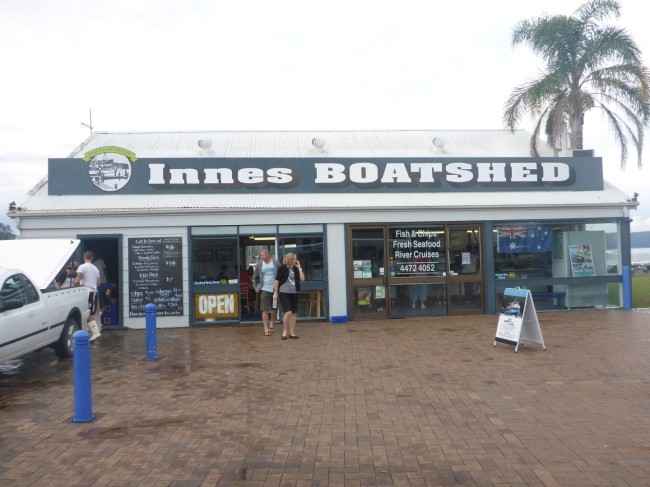Jindabyne, Victoria. 17th April 2016.
After a month in the city it was time to head for the hills. Fresh air, fresh views and fresh bends. Ultimately I was heading for Canberra but Bernard and I had put our heads together to find a route that would satisfy my craving for some fun riding. The great roads of Tassie seemed to be a long way in the past.

Heading for the hills. The Snowy Mountains await.
Teacher and pupil managed to devise a route that got me out of the city on a freeway (the best way), then along the main road near the coast, until I could head inland up into the hills. Destination Jindabyne, way up in the Great Dividing range. If you think Australia is flat, think again. There’s plenty of mountainous country for a motorcyclist to enjoy. The nicely twisty road ran alongside the Snowy River as it climbed upwards into the Snowy Mountains. But like a skater approaching thin ice, I needed to watch were I was going as one slip could lead to disaster. As I rode along the gravel section of the road, climbing ever higher, the afternoon and the sunlight were fading, mist was rolling down and the track was slippery in places. To encourage my inclination towards caution, the drop off the edge was very steep and very deep. On the way up I’d passed some likely looking camping spots but decided to press on while I could. The highest point was a chilly 1270 metres but after that the track started going down and eventually I reached asphalt and then the town of Jindaberg.

As I head upwards a familiar name appears.
By the light of my not-very-bright headlight I found the campsite I’d been aiming for and the owner directed me to a spot near the kitchen and BBQ area. There I had shelter, light and hot water, where I could organise a meal and eat in relative comfort. I’m always impressed by the facilities found in Aussie campsites. There are invariably camp kitchens and a free gas BBQ, with sinks and usually a fridge/freezer too. And all for $12.50. Fantastic. Over the last two weeks at Bernard and Mary’s I’d been living in a different world, like being up in a cloud or some kind of fairyland. Now I was literally back down to earth.
Jindabyne offered nothing more than a place to refuel and buy some ever more necessary engine oil. Consumption was increasing noticeably. My plan for the day was to climb up through Koscuizco National Park and then take a back road through to Canberra. Much more challenging than the main road.
As I travelled up through the national park I was confronted by signs advising caution for winter drivers: Pull In Here to fit snow chains; Watch Out for snowploughs. But it was still early autumn so no need for me to worry just yet. The plethora of cable lifts and lodges, sitting on the mountainsides tempting skiers like neon signs atop a casino tempts gamblers, did remind me how popular winter sports are in this part of Australia. The road is called Alpine Way, which I suppose is enough of a clue, and rose to a peak of 1580 metres as it crossed the Great Dividing Range, via the prosaically named Dead Horse gap.

High enough to need snow markers at the edge of the road.
The road, as you can imagine, was steep, bendy and narrow. I loved it. I stopped to look at the Snowy Mountain hydro-electric plant, which took twenty five years to build and provides, so the sign says, 11% of the generated electricity in Australia (4500 gigwatt hours per annum) as well as feeding water to two local irrigation schemes. Well, I was impressed. These features put me in mind of Scotland although I didn’t see any sign of bagpipes or whisky. So I settled for a peaceful coffee down in the valley town of Khancoban while I planned my next move.


Looking down over Jindabyne. Enjoying the autumn colours.
In the end Khancoban was as far as I went along my planned route. Just outside the town I turned onto the mountain road towards Canberra and was faced with a sign warning me of probable road closures. Probable? I went to explore and found the road blocked by machinery further up and I had no choice but to turn round. But let’s not deny one thing: the ride back was just as much fun as the ride out and I got a nice view of the lake next to which Jindabyne sits as I came back down to the town. Another fill up and a pleasant surprise when I calculated fuel consumption. My small engine definitely prefers hills and bends to freeways, judging by the consumption figures. A few hours later, after resorting to the main road, I booked into a YHA hostel in Canberra.
Australia’s capital is one of these odd cities which were located and built for a purpose rather than growing organically. Imagine two people deciding to get together but are unable to decide which of their home towns to live in. So they build a house for them to occupy halfway between each of them. There you have Canberra, home to the Federal Parliament of Australia. There are other examples of capital cities being created – Washington DC and Brasilia spring to mind, but Canberra is the youngest.
Why was it necessary? Entirely because of the rivalry between Melbourne and Sydney, and the need to avoid favouring either of them by granting them the status of being the nation’s capital. In Australia, interstate rivalry is just as intense as any sporting rivalry you could imagine. Think the Ashes and the Rugby World cup rolled into one..

Canberra’s unique geometrical layout.
Even before federation took place in 1901 there was recognition that a separate city would be required, although necessity meant that the new parliament initially went to Melbourne, temporarily located in the Exhibition Hall. In 1908 the location for Canberra was chosen and in 1913 the city was officially named, reflecting a local indigenous word for ‘meeting place’. An area of land was ceded by New South Wales to eventually become the Australian Capital Territory (ACT), which itself now has its own legislature, in the same way that other states and territories do. Not that there was much there. It was 1927 before the new parliament building was ready and the politicians finally moved from Melbourne. After this the growth of the city was slow, being described as ‘several suburbs looking for a city’. But post WW2 more government departments were moved there and some proper development took place. It’s design was heavily influenced by the Garden City movement so there is plenty of open space and native bushland for its 300,000 plus population.

The nation’s first purpose built parliamentary building.

But not everyone feels good about it.
The parliamentary buildings and the layout of the city were designed by Burley and Marion Griffin, from Chicago. Their design for the city used geometric patterns – circles, hexagons and triangles. They were so taken with the results of their work that they moved to Canberra, taking Australian citizenship as well. A new parliamentary building was opened in 1988, to mark Australia’s bi-centennial. It sits on top of Capital Hill and there is a direct line of sight from there, through the old parliamentary building across to the Australian War Memorial on the other side of Lake Burley Griffin. For the visitor there’s plenty to see, especially one who likes history and politics. Just right for me then. I was going to be as happy as an MP receiving their expenses cheque. Art, science and history awaited.

A sculpture called The Loop, pointing the way towards Uluru.
The city is quite spread out, with no real CBD. But the National Museum of Australia was within walking distance of my hostel so that’s what I did. The building itself is artistic, with a design that deliberately catches the eye as you approach it from the other side of the lake. The designers recognised that the history of Australia has many components so they designed a building to reflect that. Small stories about individuals; about events; about Aussies abroad; about Aussie achievers and achievements. A gallery full of Indigenous stories and another with the story of the continent itself, its animals and environments. Outside is a massive sculpture in the form of a loop, with the bottom end of it leading the eye towards Uluru, in the centre of the country. All in all a very different, and fascinating, approach to presenting history and culture.

Aboriginal totems.
Given that Canberra’s raison d’etre is to house the parliament buildings, it seemed sensible to go and look at them. The old one is now a museum of democracy and I joined the free tour around the building. We learned about the nature of government in Australia and here’s a brief run down. Skip these paragraphs if you like!
Australia uses the Westminster Parliamentary system, which means they have two houses and a non executive head of state, in this case the British monarch, represented by a Governor-General. Very strangely, to my mind at least, this official has the power to dismiss parliament – and on one famous occasion, he did just that during the constitutional crisis of 1975. Australia has six states and two internal territories, which all have their own legislatures, plus another four island territories, which don’t. The powers of a state legislature are greater, and more independent from the federal government, than those of a territory.

The rather striking new Parliamentary Building.
The two houses of parliament are the Senate and the Lower House. Each state has twelve senators, the two territories have two each. A total of 76. The numbers are fixed to ensure each state has an equal voice in the senate, regardless of size and population. By contrast, the house of representatives has 150 members and the numbers in each state depend on the size of the electorate. The two territories do not elect people to the lower house and decisions taken by their legislatures can be overridden by the federal government. Both houses use forms of proportional representation. Elections to the lower house take place very three years. The senators serve six years but elections for half of them occur every three, thereby providing overlap between the two houses and a degree of continuity. At the time of writing Australia has a double dissolution on its hands – a rare event, meaning that all MPs and senators are facing the voters. Half of the senators elected will have to face re-election in three years time so as to get the overlap back on track.

The green benches and speakers chair of the Senate, in the old building.
All this may seem very confusing but I find it far better than the British system, where we get no say whatever in who sits in our upper house. It’s bad enough being a subject of a monarch without having to suffer appointed politicians, and living in a partial theocracy as well. It’s long past the time Britain looked outwards instead of backwards and introduced a fair system. Sorry about that little rant. Sometimes a peasant’s revolt wells up inside me and I feel the need to wave my pitchfork around.
The Westminster System means that Australia has a Prime Minister, an Official Opposition and a Speaker. The Speaker’s chair is a copy of Westminster’s, as is the official mace that sits on the table in front of them. The colour of the benches in each house matches those in the House of Commons and House of Lords, i.e. green and red. In the basement is a terrific display of political cartoons, most of which are acerbicly funny.
Moving on to my subsequent tour of the new parliamentary buildings, all is much the same except that the colours of the benches, although still green and red, use shades of colour which match those found on native Gum trees. There are press galleries and public galleries on balconies above the chamber but I was puzzled by the highest of these, which had perspex screens across the front of it. I was delighted to learn that they are specifically for schoolchildren. They are soundproofed from the debating chamber so their noise doesn’t disturb events below but they can still listen to, discuss and be taught about, what’s taking place. A fabulous idea and a great way of helping to engage youngsters in the democratic process. Session times begin at 9.30am and can go on as late as 10pm but very rarely do. One very good thing is that speeches from members are limited to fifteen minutes, therefore no filibustering can take place. Well done Australia, I think the UK could learn much.

A different point of view on political matters. Aborigines still aren’t acknowledged in the Australian Constitution.
Now you’re all back with me, what other places did I visit? The National Gallery of Australia was well worth the time spent in there. It has a collection of paintings by famous international artists, such as David Hockney and Monet, as well as well known Australian artists. One such is Sidney Nolan, who produced a whole range of paintings depicting the story of bushranger Ned Kelly, done in quite a unique style. Critics panned them but what do they know? I liked them. Several galleries showed indigenous art, something I’m getting to like quite a lot. Pop art, impressionist paintings, plenty of sculpture. It was well worth the price of the parking ticket I found stuck on my bike when I came out – although it remains unpaid. Naughty me!

A Hockney landscape.

Sidney Nolan’s take on Ned Kelly’s trial. A distinctive style, you might say.
There’s a very good place called Questacon, the National Science and Technology Centre. You’ll not be surprised to hear it’s full of displays about science and technology, and hundreds of holidaying kids enjoying them. Most of them are interactive and I think it’s a place where visitors need to take a child, just to get the most out of it. I couldn’t find one to borrow so wandered around on my own. But I very much enjoyed the presentation on dinosaurs, given by a very enthusiastic palaeontologist, fresh from a dig where they’d made some exciting discoveries. Artefacts from around 45,000 years ago have been discovered, increasing the knowledge of Australia’s earliest occupants.

Inside the War Memorial. Memories of WW2.
My last visit was to the Australian War Memorial, with displays that tell of ANZAC activities from WW1 and WW2, as well as Australian military events since. There’s a great collection of planes, mini submarines, artillery and so on. As at the Menin Gate in Belgium, they have a Last Post ceremony, at 4.45pm each day, just as the museum closes. A bugler and a bagpiper did the honours and some wreaths were laid by various people, including some school groups. So, a sad but uplifting way to finish my visit to Canberra.

Playing the Last Post.
So now begins a cautionary tale, which can best be summarised as: be careful about listening to Cousin Bob. My Canadian Cousin Bob lived in Canberra for over two years and gave me some suggestions of places to visit, some of which I followed. So far, so good. But he also suggested I take a ride out to Bateman Bay where there is a fish and chip café of the highest quality. Although Sydney lies to the north and Bateman Bay is to the south, I decided to give it a go, aiming to cover the 680km distance in one day. I’m sure you can guess that I failed – miserably. Like a motorcycling version of Mr Bean, I seemed to bounce from one disaster to another.
Firstly, it was 2pm before I reached Bateman Bay and 3pm before I left, with nearly 300kms still to ride. Then, less than an hour down the road, I broke down. In fairness to Doris (and Cousin Bob) this was a first. I’d had punctures before, but never a mechanical failure. The fault was in the carburettor and it was 7pm before I’d fixed it and was on the way again. It wasn’t running properly but was good enough. A couple of lads in a fourby stopped to see if they could help, offering the use of their headlights, if nothing else. I was grateful but could manage without them.

The bird of Paradise approaches the Hot Water Planet, by James Rosenquist. Or, just possibly, the Inside of My Carburettor.
Eventually I made it into the town of Nowra, but there was no hostel there. I decided to go along to Wollongong, where I knew there was one but I needed fuel. While I was in the servo, a guy pointed out a strap that was hanging down from the bike. I instantly realised it should have been securing the bike cover I carry with me, and then I instantly realised that meant I’d left it behind, where I broke down. Sure enough, when I’d ridden the 45kms back there, it was lying on the ground. It was now too late to go to Wollongong so I found a motel back in Nowra where I gratefully slept in a very expensive bed . I was cheered up slightly by the Victoria Bitter being on special offer in the pub. Next day, with the bike playing up most of the way, I eventually made it to Sydney.
So there we are. Remember to be very careful of what you do with Cousin Bob’s advice.
But in fairness to Bob it wasn’t his fault that I left Canberra at least two hours later than I should have; nor that the bike broke down; nor that I left the bike cover behind; nor that there wasn’t any cheap accommodation in Nowra. But I am grateful to Bob for recommending Innes Boatshed Café because the fish and chips were, as he promised, delicious.

Great fish and chips next to the harbour.

Geoff: I guess this destroys my reputation as tour guide/director, suggestor of itineraries! Glad the fish and chips were still up to standard in Bateman’s Bay. Despite the misadventures, I hope the ride down to the coast and then up to Sydney was pleasant. Some of the pics you showed were certainly familiar from our time in Canberra. Cheers . Cousin Bob
LikeLike
Hi Bob.
I think your reputation remains intact. What’s totally gone west is my ability to follow it!!
I enjoyed Canberra though, and all your suggestions were very helpful.
Regards,
Geoff
LikeLike